Shimano has today launched 12-speed versions of XT and SLX, its second- and third-tier mountain bike groupsets.
The two new groupsets draw much from last year’s XTR M9100 and we’ve covered all of the highlights in this separate article.
This piece aims to address the key differences in weight, price, ergonomics and performance between XT M8100 and SLX M7100.
- Mountain bike groupsets: everything you need to know
- Shimano XT and SLX 12-speed is here and it’s almost as good as XTR
- Shimano XTR M9100 groupset first ride review
- Shimano XTR M9100: everything you need to know
The weight difference between Shimano SLX M7100 and XT M8100
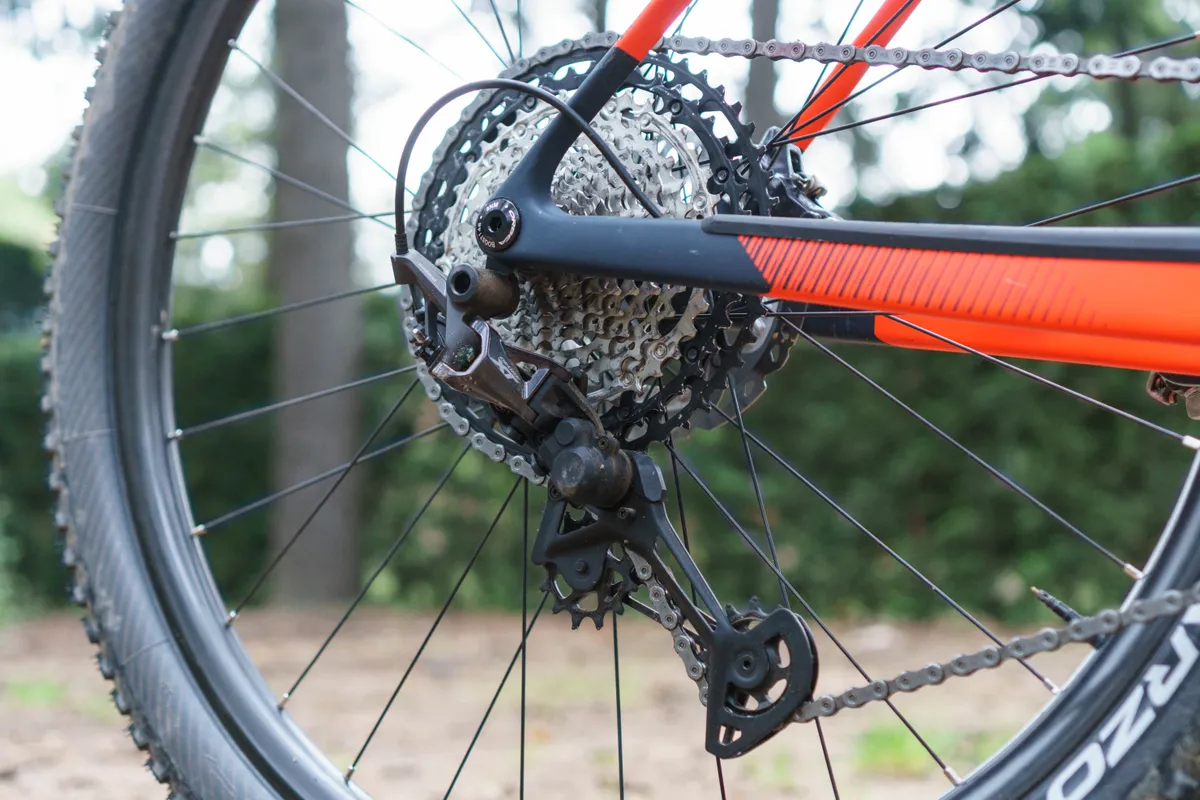
Determining a total weight for a groupset is very complicated. It is doubly complicated with Shimano because unlike, say, SRAM, double chainsets and multiple caliper options are available.
As such, we have decided not to quote a full groupset weight. Instead, we've included a list of component weights from the two new groupsets.
Note that the following weights are claimed weights from Shimano. As always, it’s best to take claimed weights with a pinch of salt but, as they appear so specific, our gut instinct says to trust them in this instance.
Nonetheless, once we have the groupsets in hand, we will update this article with actual weights.
For context, Shimano claims that in an (unspecified) like-for-like groupset package, SLX will weigh 148g more than XT. This is obviously a fairly vague figure and comparisons are best made from the list below.
Shimano SLX M7100 individual component weights
Rear Derailleurs
- RD-M7100-SGS: 316g
- RD-M7120-SGS: 322g
Front derailleurs
- FD-M7100-D: 135g
- FD-M7100-E: 106g
- FD-M7100-M: 114g
Cranksets
- FC-M7100-1 (32t, 175mm): 631g
- FC-M7100-2 (26-36t, 175mm): 674g
Bottom bracket
- BB-MT800 (non-series bottom bracket): 82g
Shifters
- SL-M7100-R: 117g
- SL-M7100-IR: 117g
- SL-M7100-L: 77g
- SL-M7100-IL: 77g
Cassettes
- CS-M7100-12 (10-51t): 534g
- CS-M7100-12 (10-45t): 513g
Chain
- CN-M7100: 252g
Brakes
- BRM7100-BLM7100 (160mm rotor with all hardware): 425g
Front hubs
- HB-M7110: 142g
- HB-M7110-B: 147g
Rear hubs
- FH-M7110: 350g
- FH-M7110-B: 354g
- FH-M7130-B: 359g
Shimano XT M8100 individual component weights
Rear Derailleurs
- RD-M8100-SGS: 284g
- RD-M8120-SGS: 290g
Front derailleurs
- FD-M8100-D: 135g
- FD-M8100-E: 106g
- FD-M8100-M: 114g
Cranksets
- FC-M8100-1 (32t, 175mm): 620g
- FC-M8100-2 (26-36t, 175mm): 654g
- FC-M8120-B2: 672g
Bottom bracket
- BB-MT800: 82g
Shifters
- SL-M8100-R: 117g
- SL-M8100-IR: 120g
- SL-M8100-L: 78g
- SL-M8100-IL: 78g
Cassettes
- CS-M8100-12 (10-51t): 470g
- CS-M8100-12 (10-45t): 461g
Chain
- CN-M8100 (113 links + quick link): 252g
Brakes
- BRM8100-BLM8100 (160mm rotor + all hardware): 392g
Front hubs
- HB-M8110: 142g
- HB-M8110-B: 147g
- HB-M8110-BS: 158g
Rear hubs
- FH-M8110: 305g
- FH-M8110-B: 307g
- FH-M8110-BS: 306g
- FH-M8130-B: 310g
Wheelsets
- WH-M8100-TL-F15-B-29: 846g
- WH-M8100-TL-F15-B-275: 808g
- WH-M8100-TL-R12-B-29: 994g
- WH-M8100-TL-R12-B-275: 956g
- WH-M8120-TL-F15-B-275: 875g
- WH-M8120-TL-F15-B-29: 916g
- WH-M8120-TL-R12-B-275: 1,016g
- WH-M8120-TL-R12-B-29: 1,061g
Shimano 12-speed groupset prices
Shimano has also supplied us with prices for select components. We only have prices for these individual components in the UK and US so far.
Comparison between different territories and coming up with complete prices is always tricky — for example, Madison, Shimano’s UK distributor, only lists prices for cranksets without chainrings. The US distributor supplies the cranks with a chainring.
Shimano SLX M7100 component prices
- Rear derailleur RD-M7100-SGS: $74.99 / £74.99
- Crankset FC-M7100-1 (32t, single ring): $104.99 / £N/A
- Crankset FC-M7100 (no chainring): $N/A / £99.99
- Chainring SM-CRM75: $32.99 / £34.99
- Bottom bracket BB-MT800: $25.99 / £32.99
- Shifters SL-M7100-IR: $38.99 / £34.99
- Cassette CS-M7100-12: $99.99 / £99.99
- Chain CN-M7100: $31.99 / £29.99
- Front/rear disc brake set BL-M7100-BRM7120 (four-pot, no rotor or adaptor): $174.99 / £N/A
- Disc brake caliper BR-M7120 (four-pot, single caliper): $N/A / £149.99
- Disc brake caliper BR-M7100 (two-pot, single caliper): $N/A / £99.99
- Disc brake lever BL-M7100: $N/A / £34.99
- Disc brake rotor SM-RT70 (centrelock, 160mm): $29.99 / £27.99
For an SLX groupset built in a 1x12 arrangement with four-pot brakes and 160mm rotors, the RRP would be $819.89 / £833.87.
Shimano XT M8100 component prices
- Rear derailleur RD-M8100-SGS: $114.99 / £99.99
- Crankset FC-M8100-1 (32, single ring): $154.99 / £N/A
- Crankset FC-M8100 (no chainring): $N/A / £139.99
- Chainring CM-CRM85: $61.99 / £59.99
- Bottom bracket BB-MT800: $25.99 / £32.99
- Shifters SL-M8100-IR: $60.99 / £54.99
- Cassette CD-M8100-12: $159.99 / £139.99
- Chain CN-M8100: $43.99 / £39.99
- Front/rear disc brake set BL-M8100/BR-M8120 (four-pot, no rotor or adaptor): $209.99 / £N/A
- Disc brake caliper BR-M8120 (four-pot, single caliper): $N/A / £169.99
- Disc brake caliper BR-M8100 (two-pot, single caliper): $N/A /£129.99
- Disc brake rotor RT-MT800-S (centrelock, 160mm): $52.99 / £44.99
For a full XT groupset built in a 1x12 arrangement with four-pot brakes and 160mm rotors, the RRP would be $1,148.89 / £1,257.89
Prices for the XT-level wheels and pedals are as follows:
- Wheelset WH-M8120-B-27.5 (pair): $419.99 / £409.99
- Wheelset WH-M8120-B-29 (pair): $419.99 / £409.99
- Pedals PG-M8100/M8120: $120 / £99.99
Note that the US pricing sheet does not include separate pricing for the XC and trail version of the XT-level wheels. However, the UK one does and the prices are the same for either wheelset. We suspect the same will be true of the US pricing.
It’s worth remembering that, as always, Shimano RRPs rarely reflect reality and the likelihood is that you’ll pay far less once products are on the big online retailers.
Shimano XT M8100 and SLX M7100 — Australian pricing
Thus far, Shimano Australia has only been able to supply us with the approximate whole groupset costs;
- XT M8100: AU$1,499
- SLX M7100: AU$999
Shimano XT M8100 vs SLX M7100 — ergonomics
XT has a few small ergonomic improvements over SLX.
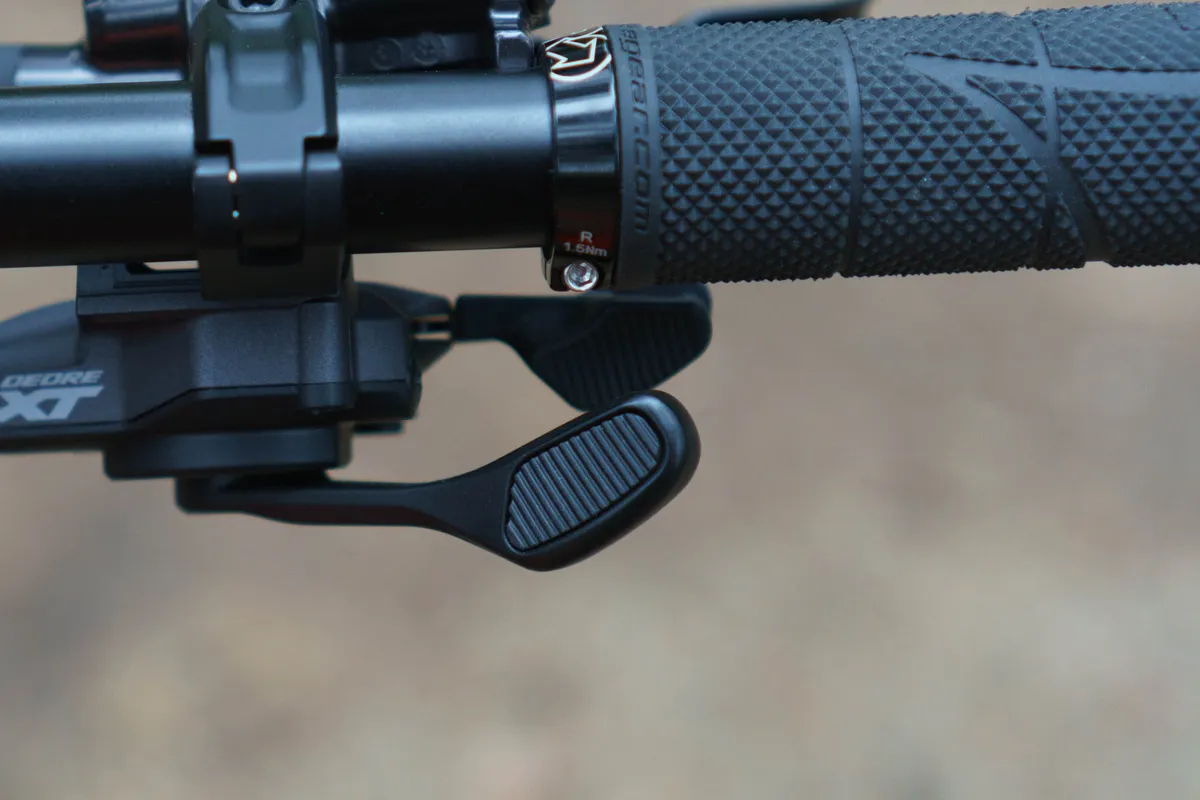
The shifters are the main highlight — we cover exactly why we think they feel better in the performance section of this article, but it boils down to the inclusion of the Multi Shift function on the XT levers. This allows you to dump up to two gears at once and is very useful in practice.
The overall build of the shifters is also a bit nicer on XT — tolerances feel tighter and there’s less slop overall. The XT shifters also gain a nice rubber gripper on each shift lever.
There is no free stroke adjuster on the SLX levers, though this is no great loss. The XT brake levers also get dimples drilled into the levers to improve feel.
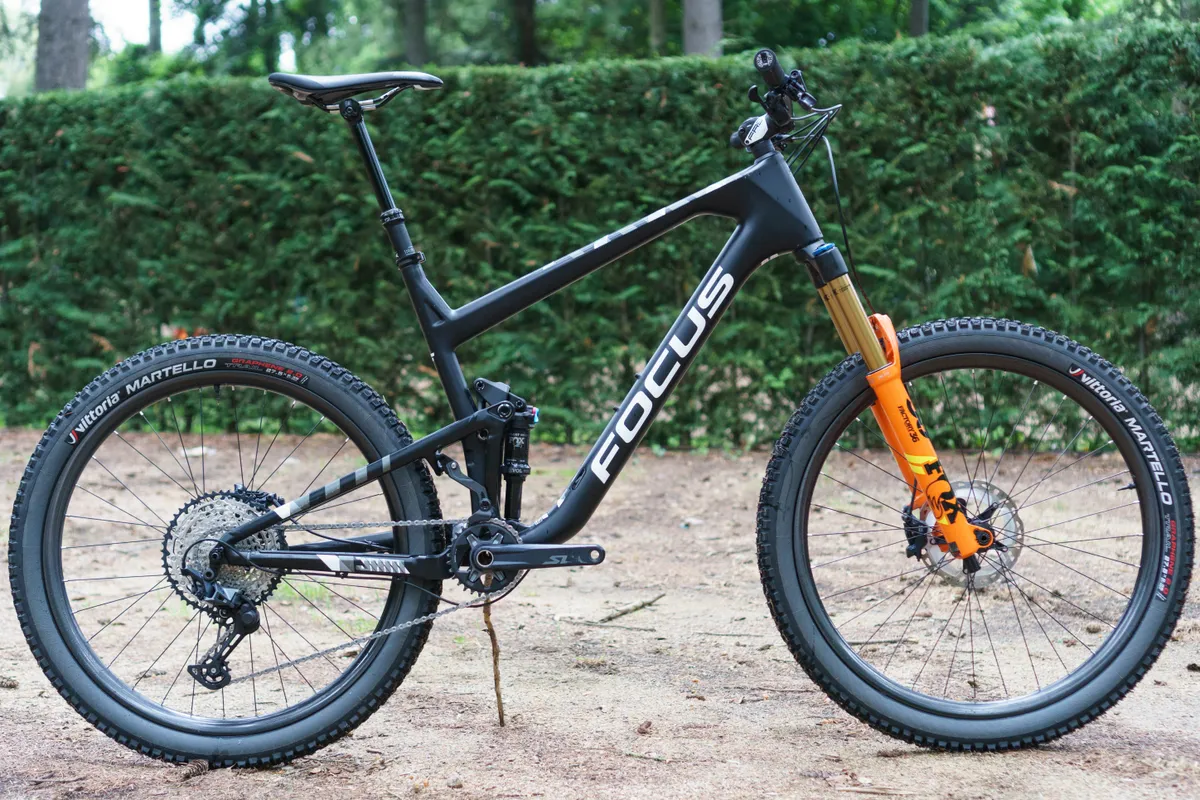
While it’s not strictly related to ergonomics, the overall finish of XT is just that little bit nicer than SLX. With that said, we think this is the best ever looking version of Shimano’s third-tier mountain bike groupset.
It has this lovely dark, sparkly and understated finish that looks really premium, even on a high-end bike.
It’s not cool to admit that looks matter, but they do, and with the new generation of groupsets, Shimano is finally catching up with SRAM in the desirability stakes.
Shimano XT M8100 vs SLX M7100 — performance
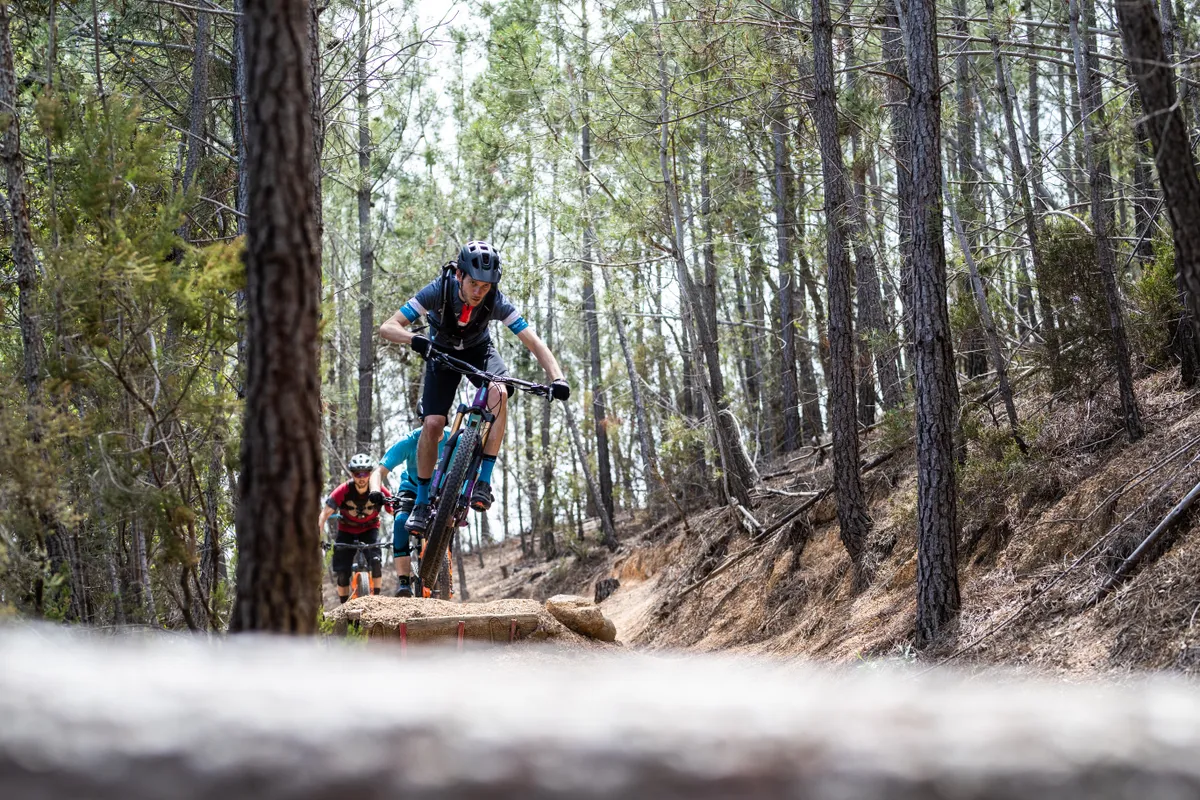
We had a chance to ride both of the groupsets back-to-back over the course of two days of riding at Shimano’s press camp.
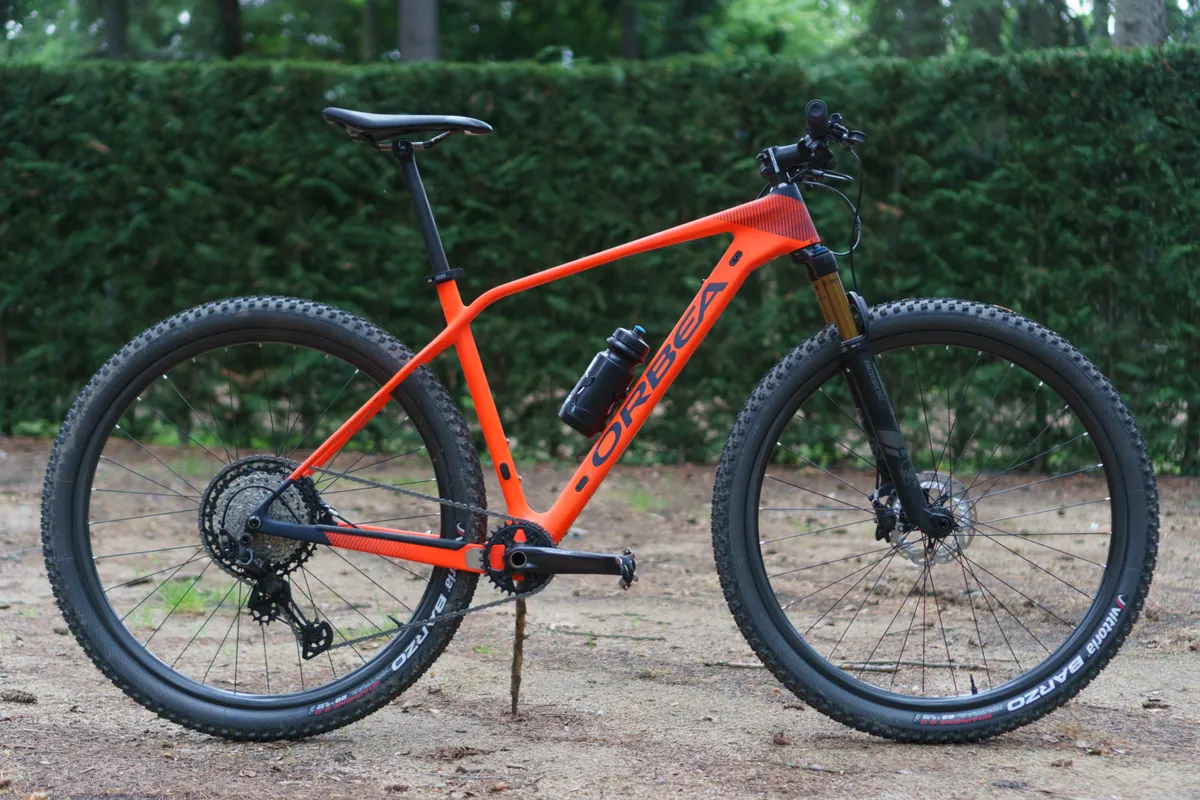
The SLX groupset was mounted to a Cube Stereo 140 — an all-round trail bike — and the XT groupset was fitted to an Orbea Alma XC hardtail. This setup made sense because XT, being the racier of the two, is more likely to be specced on go-fast, race-oriented bikes.
I’d normally produce a first ride review from a launch like this, but owing to the limited time we had on the groupsets, we feel initial impressions and a comparison between the performance of the two is more helpful.
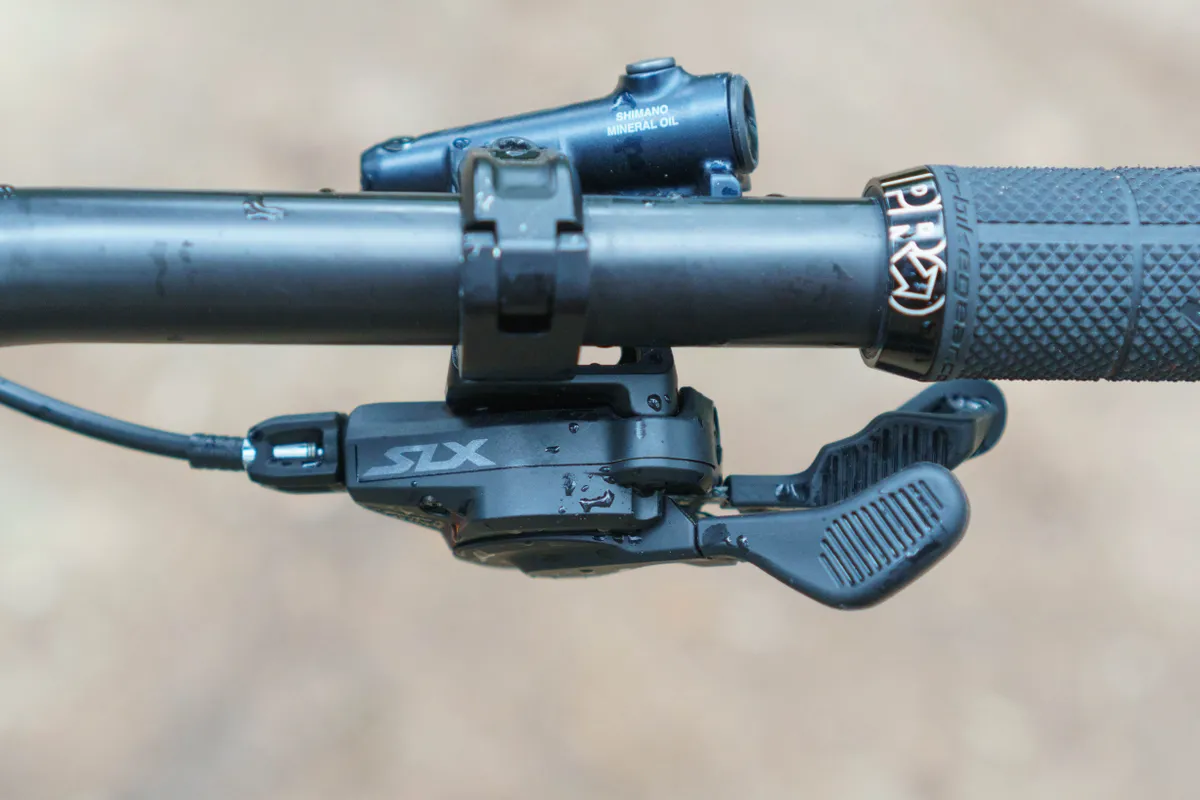
The first thing that stands out is the lightness of the shifting on both of the groupsets. The lever feel is exceptionally effortless and the instant release means downshifts are almost instantaneous.
XT wins out ever so slightly with the lever feeling that little bit ‘tighter’, with less free stroke before shifts take place. The rubber grippers on each shift lever are also a welcome addition.
However, where XT really shines is on downshifts (i.e. shifting into a smaller cog). The multi release function, which allows you to dump up to two cogs at once, is incredibly useful. When going for an effort out of the saddle, you can get into a harder gear that bit quicker.
I’ve almost exclusively ridden SRAM mountain bike groupsets for the past few months. This feature is not available on its groupsets and I had no idea how much I needed it in my life.
Of all the differences between the two groupsets, this is the most notable and I can totally foresee many riders opting to upgrade their SLX-equipped bikes to an XT shifter.
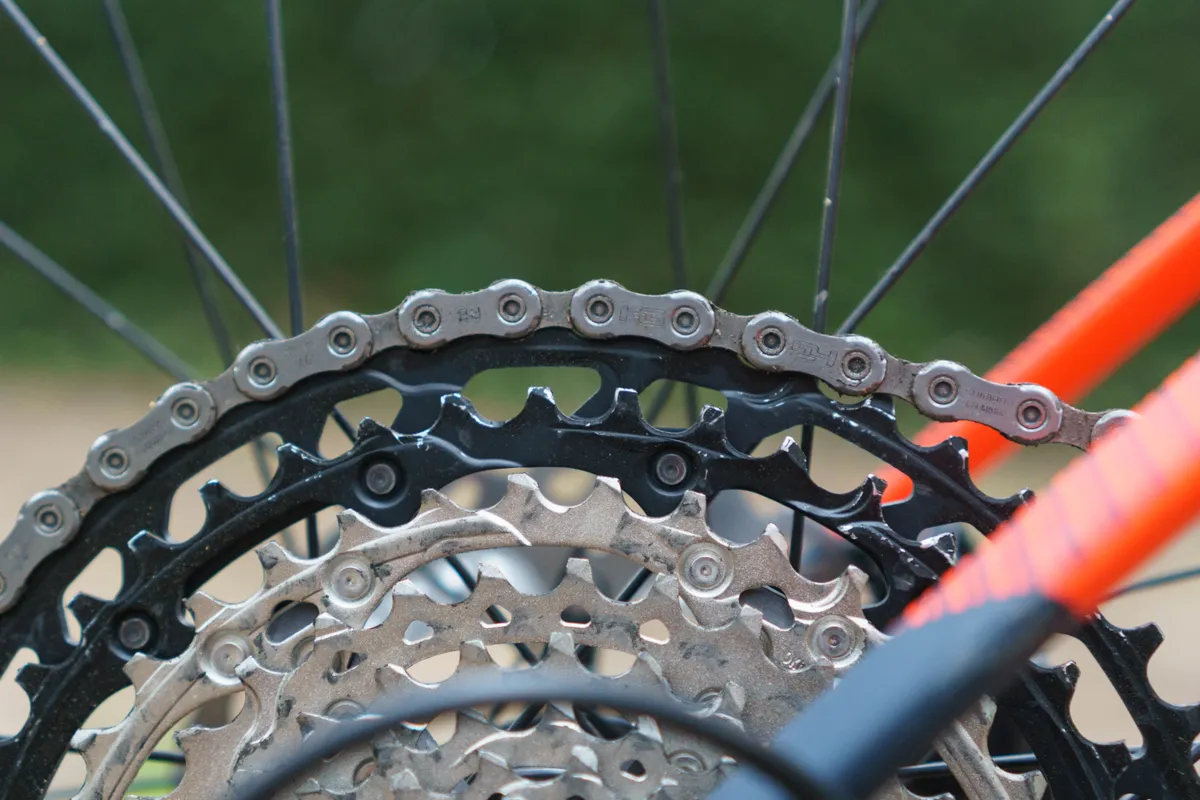
The Hyperglide+ technology, which essentially holds the chain in place as it shifts onto a smaller cog, is also very impressive. We tried our damndest to force the groupset into skipping or complaining to no avail. It really does hold fast under even my most middling of power.
It’s hard to say definitively, but I do feel this results in ever so slightly slower shifts compared to SRAM. The chain is literally being held in place on downshifts, so this makes sense. How much this really matters, and whether the improvements to chain security under hard efforts is worth the tradeoff, remains to be seen.
It’s easy to poke fun at Shimano opting for a 51t largest cog. SRAM’s largest cassette offers a 50t cog and, on the surface, it appears like the pettiest form of one-upmanship.
The sceptic in me thinks there’s a grain of that in there, but there’s also no denying that the even jump between the 45t and 51t cog is smoother than SRAM’s 42t to 50t — the 51t feels less like a bailout gear, with a smooth change in cadence as you shift into it.
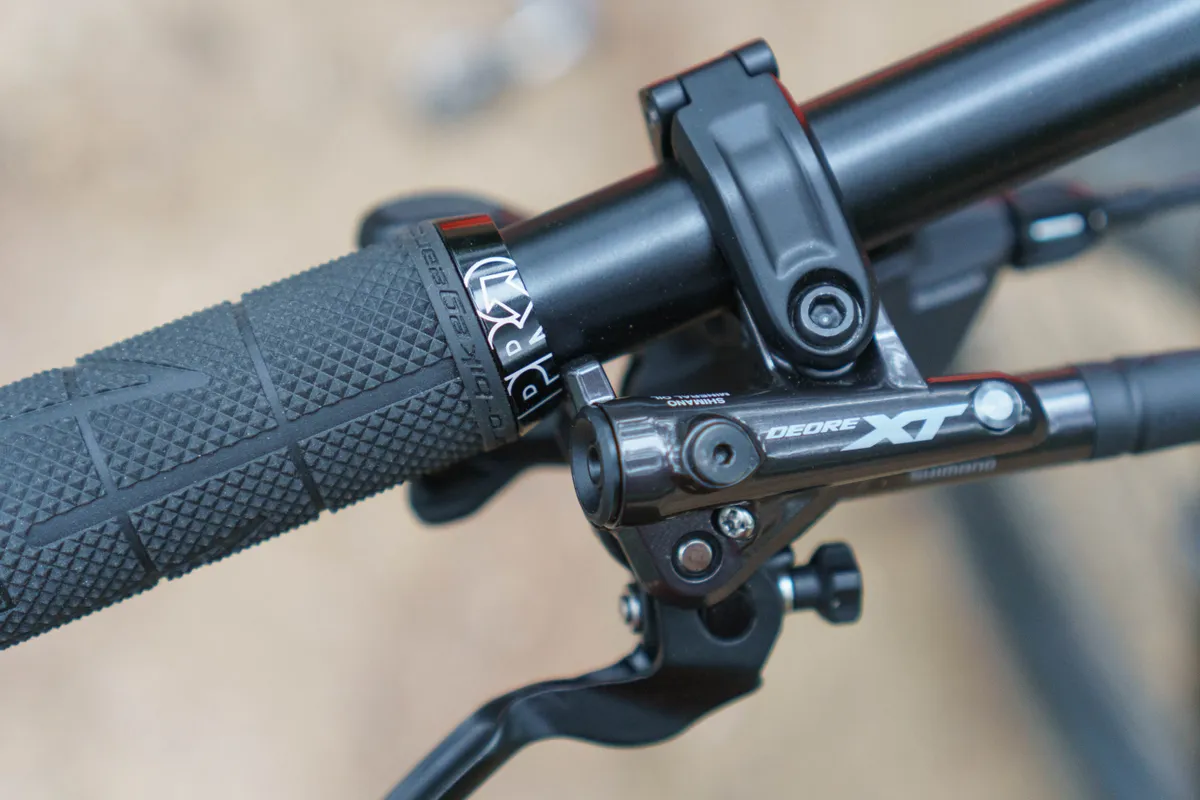
Braking performance is broadly similar between the two groupsets, though the textured lever on the XT lever is certainly welcome. The SLX lever doesn’t feature a free stroke adjuster, but this is no great loss. The supporting nub on both brakes is also welcome.
While many will bemoan the introduction of yet another i-spec standard (Shimano has introduced approximately one billion variations so far), there’s no denying that the newest version is very easy to use and offers an impressive range of adjustability.
I found the 14mm of lateral adjustment to be particularly useful, and used it to its extremes on the Orbea Alma hardtail I rode — its perilously narrow bars were terrifying on steep descents and being able to smash the brake levers out as far as possible while moving the shifters inboard so that I didn’t have to force my hands any further inwards was very helpful.
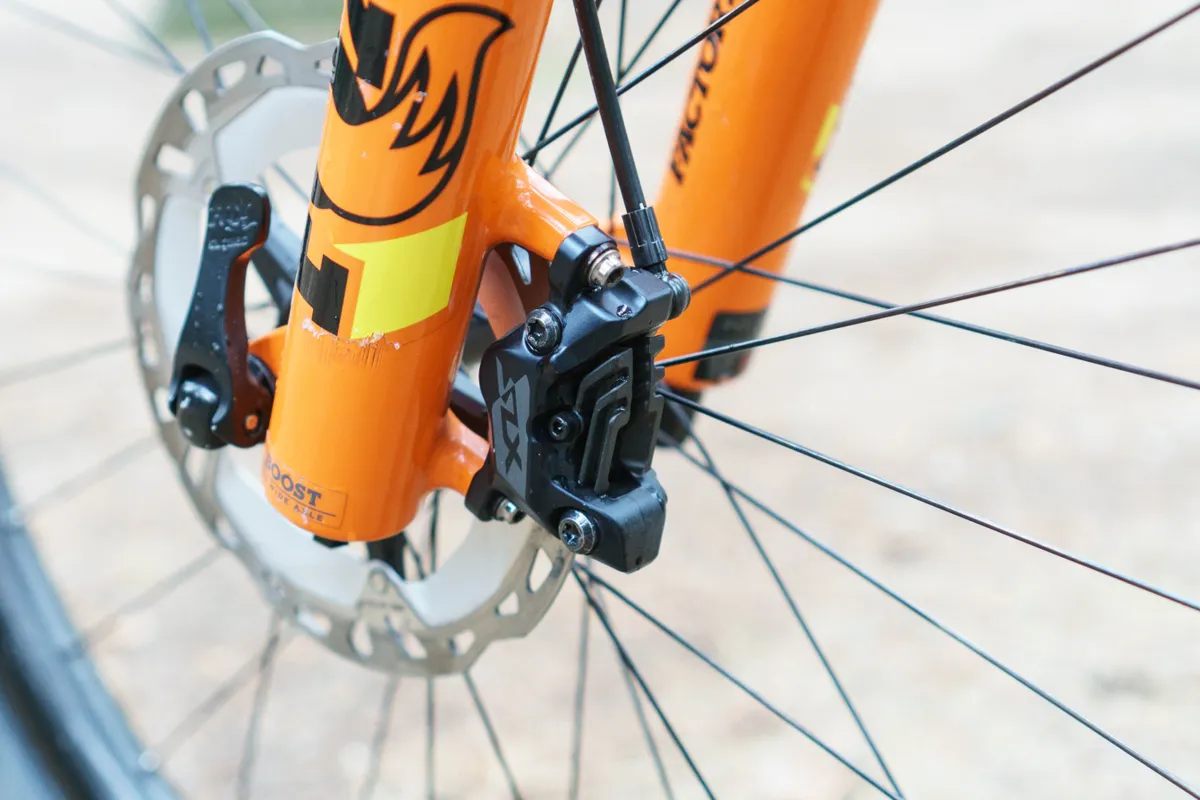
It’s worth noting that my SLX test bike featured XT-level rotors. The SLX rotors don’t feature the cooling fins pictured and braking performance on longer, draggy descents would have likely been improved as a result.
It’s been well publicised that Shimano has dropped Sylence — one of its flagship technologies introduced with XTR — from its entire lineup. This system completely disengaged the freehub internals when coasting.
The internals on the new XT wheelsets and hubs are yet to be given a catchy branding name and I’m yet to find out exactly how they differ to Sylence. When I have more details, I’ll update this article.
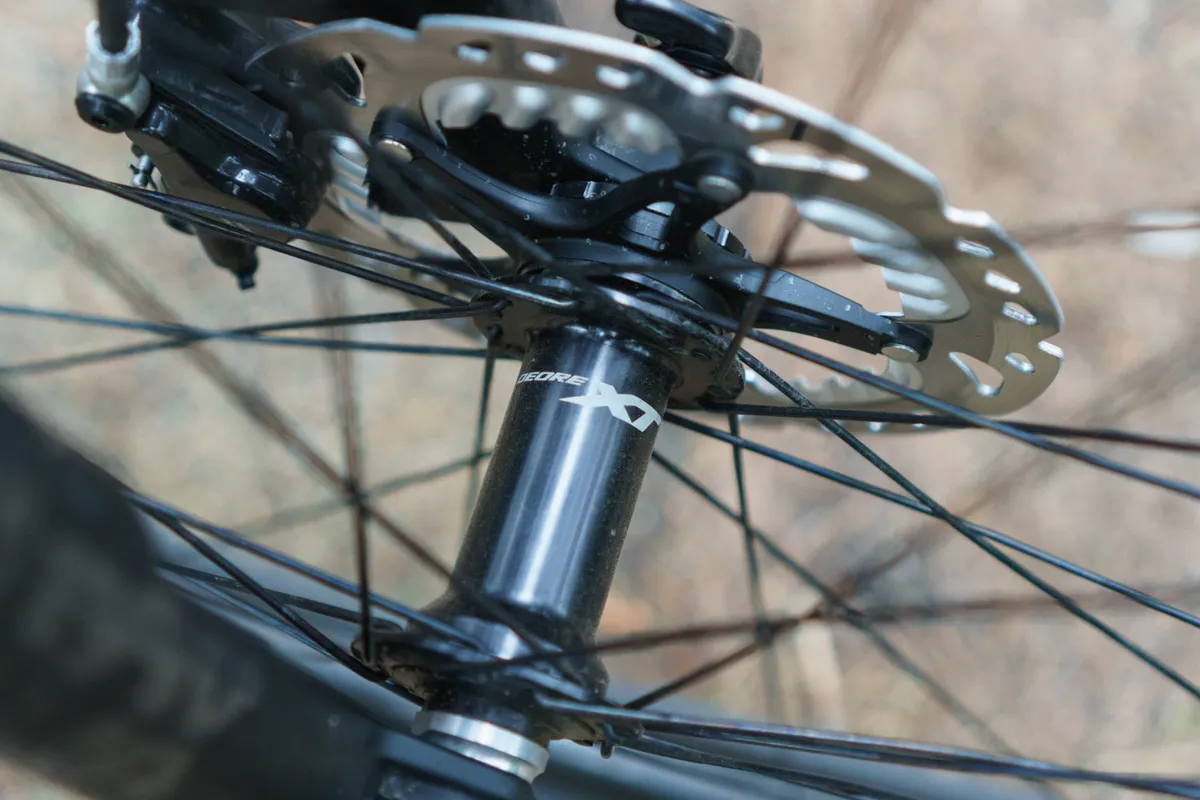
Complete XT wheelsets were stuck in Barcelona airport customs during the launch, so we’re yet to use those, but we did have a chance to ride both XT and SLX hubs laced to unbranded rims. Both feature quick pickup and have a pleasing freewheel humm on the trail.
As a slight aside, I’m amazed that Shimano still offers separate hubs in its lineup. The custom wheel market is miniscule compared to the demand for complete wheels and offering such a wide variety of options across pretty much every discipline and tier must be a huge logistical nightmare.
Nonetheless, I’ve always been a fan of Shimano hubs and hope it continues to offer it’s excellent and, usually, very affordable options for years to come.
We only had limited time on the new groupsets, so I’m reluctant to dwell any more on performance — that is best left to a full review after extensive testing that I am sure will follow in the months to come.
Shimano XT M8100 vs SLX M7100 compatibility
As I mentioned in my overview, all XTR, XT and SLX components are compatible with each other. This is huge news and opens up loads of opportunities to pick and choose upgrades.
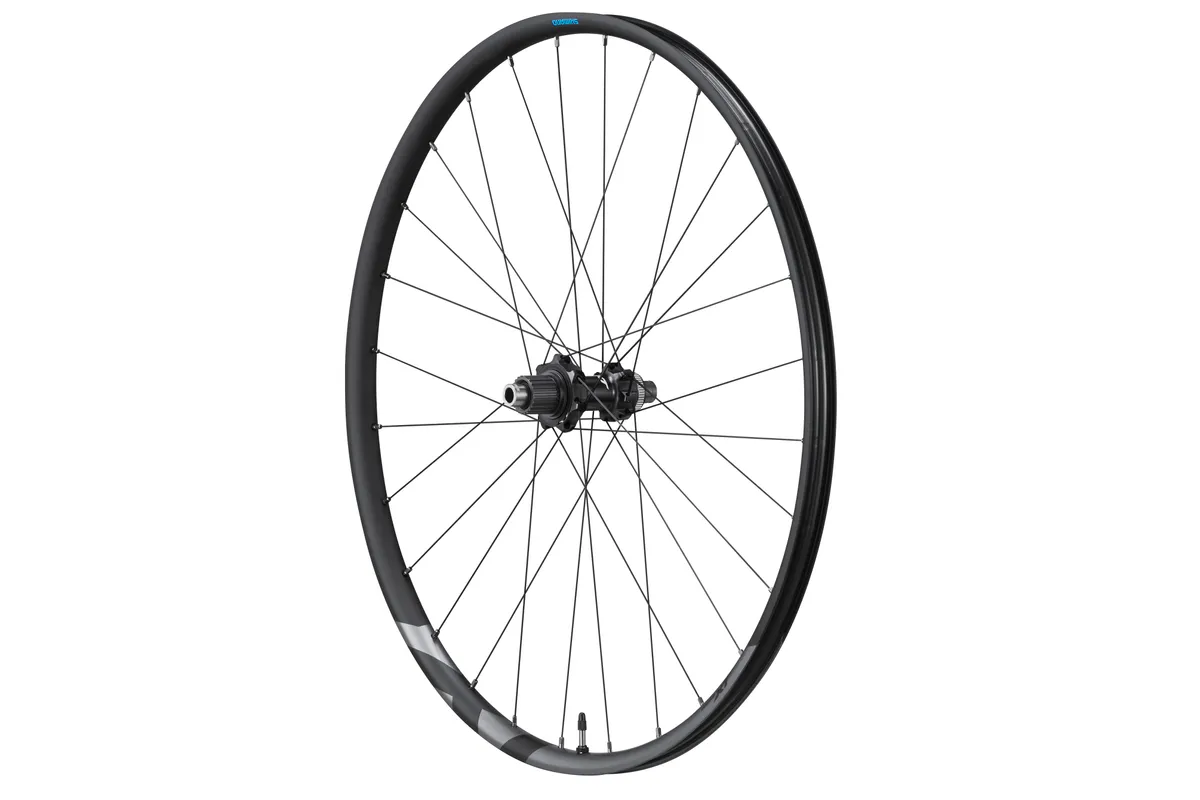
The only thing SLX misses out compared to XT is complete wheelsets. These wheelsets are, of course, compatible with either SLX or XTR, but it’s interesting to note that Shimano is only offering wheels at this level.
What do you think? Are you an SLX, XT or XTR person? Is there anything we’ve missed? Leave any thoughts or questions in the comments and we'll do our best to get back to you!

